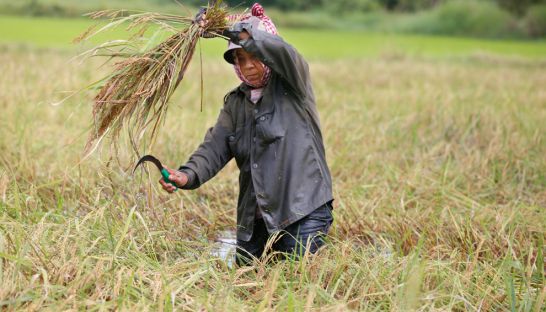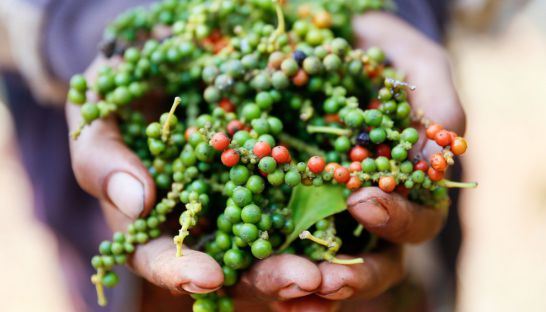Rice deal cooking with Bangladesh
Rice deal cooking with Bangladesh
Cambodia and Bangladesh announced a potentially massive rice deal yesterday that would deliver up to 1 million tonnes of local rice to the South Asian nation over the next five years, provided they agree on the pricing terms.

Minister of Commerce Pan Sorasak said Bangladesh signed a memorandum of understanding (MoU) for the purchase of 1 million tonnes of rice after its own crops were damaged by heavy flooding in May and stockpiles to feed its population of 162 million were quickly depleted.
“Bangladesh will purchase 1 million tonnes of rice in the next five years, with an initial rice shipment of 250,000 tonnes to be delivered by October this year,” he said, adding that the state-owned Green Trade Company would collaborate with the Cambodia Rice Federation (CRF) to fill the export orders.
According to Sorasak, Bangladesh is seeking urgent shipment of 200,000 tonnes of white rice and 50,000 tonnes of parboiled rice in the coming months.
Qamrul Islam, Bangladesh’s Minister of Food, explained that flash floods in the northeastern part of his country in May, which reportedly wiped out a potential 700,000 tonnes of rice under cultivation, had led to a severe food shortage.
“Due to the floods, we are having a lot of problems,” he said. “And for that reason, we came here to sign the MoU to import rice to our country. Right now we would like to purchase 250,000 tonnes immediately, and then we will decide about more in the future.”
CRF President Sok Puthyvuth said following the signing that Cambodia could easily fill the order, but cautioned that the deal was still just an MoU and there were no guarantees that even a grain of Cambodian rice would ever reach Bangladeshi ports. He said it would all come down to price, noting that Bangladesh had signed similar prospective agreements with Cambodia’s rival rice producers in the region, including some able to offer a lower price on delivery.
“The timeframe for this amount is not an issue because we already have a lot of paddy rice on hand,” he said. “But what we need to discuss and find is a fair market price to meet their demand.”
He expressed optimism, however, pointing out that even though Cambodia’s rice prices were slightly higher than those of some neighbouring countries he still felt Bangladesh would opt to purchase Cambodian rice.
Hean Vanhan, undersecretary of state of Ministry of Agriculture, said the MoU could open the door to a previously untapped market for Cambodian rice exports. However, he said even if the two governments finalise the deal its success would depend on its terms, pointing out that Bangladesh’s existing import tariffs on Cambodian rice could push costs up.
“We welcome the opportunity for a new export destination, but we have to make sure of what has actually been agreed upon in the MoU,” he said. “If there is no import tariff exemption and our prices do not match, then a target of 1 million in five years will not work.”
In 2016, Cambodia exported 542,144 tonnes of milled rice, a nominal 1 percent increase over the previous year. Rice exports reached 300,000 tonnes during the first half of the year, according to Ministry of Commerce data, with much of this bound for China, which has agreed to purchase 200,000 tonnes of rice in 2017.
Vanhan said that despite Cambodia averaging about 5 million tonnes of paddy rice surplus annually, the country’s capacity to fill Bangladesh’s order would hinge on local millers having sufficient capital to purchase the paddy instead of letting it flow out of the country through Vietnamese brokers.
Song Saran, CEO of rice miller and exporter Amru Rice, expressed scepticism over the 1 million tonne rice deal given that Bangladesh has inked similar MoUs with India, Pakistan, Vietnam and Thailand.
“We are their fifth option and we face a lot of challenges to be competitive,” he said. “However, we should still take the chance to join the tender.”
He added that Bangladesh would need to import about 1.2 million tonnes of rice this year, which he suspected would end up being supplied mostly by neighbouring India.














